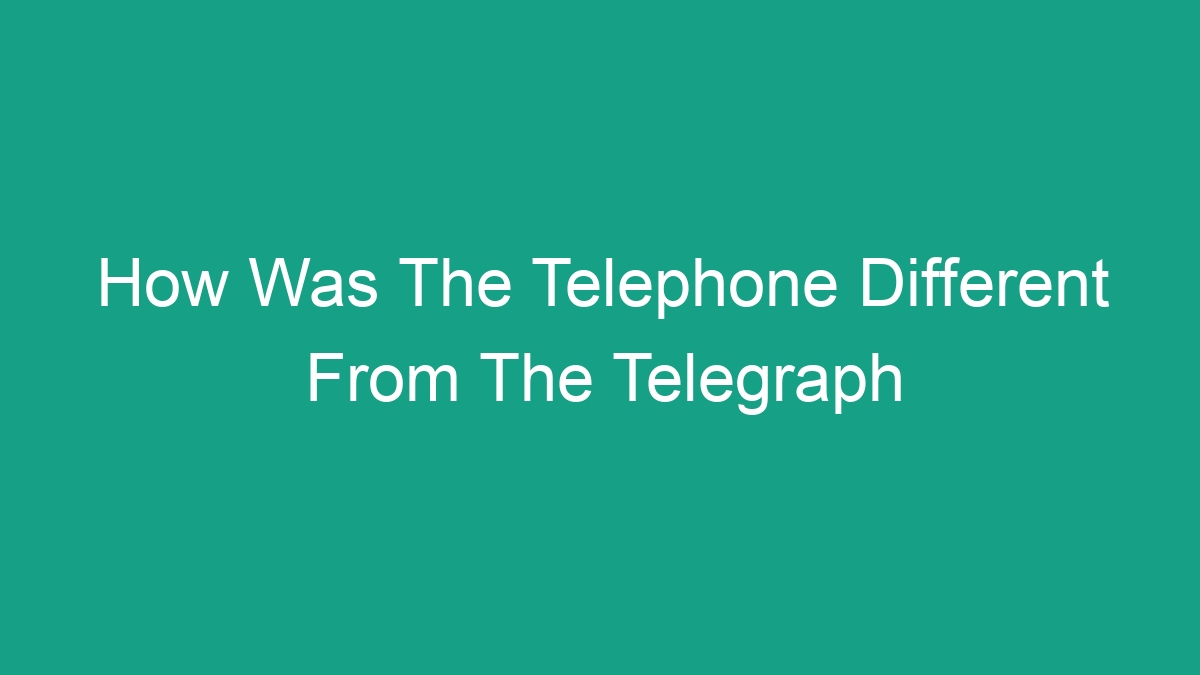
Introduction
The invention of the telephone and the telegraph revolutionized long-distance communication and played a significant role in shaping the modern world. While both devices were groundbreaking in their time, they differ in several key aspects, including their technology, transmission of messages, and impact on society. In this article, we will explore the fundamental differences between the telephone and the telegraph.
Technology
One of the primary differences between the telephone and the telegraph lies in their underlying technology. The telegraph, patented by Samuel Morse in 1837, relies on electrical signals transmitted over wires to send messages in the form of morse code. On the other hand, the telephone, invented by Alexander Graham Bell in 1876, utilizes sound waves to transmit voice signals through electrical wires.
While the telegraph required trained operators to interpret and send morse code messages, the telephone allowed for real-time conversations between two individuals, marking a significant advancement in communication technology.
Transmission of Messages
Another key difference between the telephone and the telegraph is the nature of the messages they transmitted. The telegraph primarily conveyed written messages in the form of morse code, which necessitated a skilled operator to interpret and transmit the signals. This made telegraph communication slow and restricted to written text.
On the contrary, the telephone allowed for the transmission of oral communication in real-time. This meant that individuals could engage in spontaneous conversations, conveying emotions, nuances, and tone of voice, which revolutionized interpersonal communication.
Impact on Society
The introduction of the telegraph and the telephone had profound effects on society, albeit in different ways. The telegraph facilitated long-distance communication, enabling the rapid transmission of information across vast distances. This innovation played a crucial role in connecting people, businesses, and governments, ultimately contributing to the globalization of communication and commerce.
On the other hand, the telephone revolutionized interpersonal communication, allowing individuals to instantly connect with one another regardless of their location. This significantly transformed personal relationships, business interactions, and emergency response systems, ushering in a new era of instant communication.
Advancements and Evolution
Over time, both the telephone and the telegraph underwent significant advancements and evolved to meet the changing needs of society. The telegraph saw advancements in its transmission speed and the development of automatic telegraphy systems, which improved its efficiency and reliability.
Similarly, the telephone experienced innovations such as the integration of rotary dialing, wireless communication, and eventually, the transition to digital networks. These advancements further expanded the capabilities of the telephone, making it an indispensable tool in everyday life.
Conclusion
In conclusion, the telephone and the telegraph differ in their technology, transmission of messages, and impact on society. While the telegraph revolutionized long-distance written communication, the telephone transformed interpersonal communication through real-time oral conversation. Both inventions paved the way for the development of modern communication systems, shaping the way we connect with one another in the digital age.
FAQs
What is the main difference between the telephone and the telegraph?
The main difference lies in their method of communication. The telegraph transmits written messages in morse code over electrical wires, while the telephone transmits oral communication through sound waves.
How did the telegraph impact society?
The telegraph facilitated rapid long-distance communication, connecting people, businesses, and governments across vast distances, contributing to the globalization of communication and commerce.
What advancements did the telephone undergo?
Over time, the telephone saw advancements in rotary dialing, wireless communication, and the transition to digital networks, expanding its capabilities and making it an indispensable tool in everyday life.




